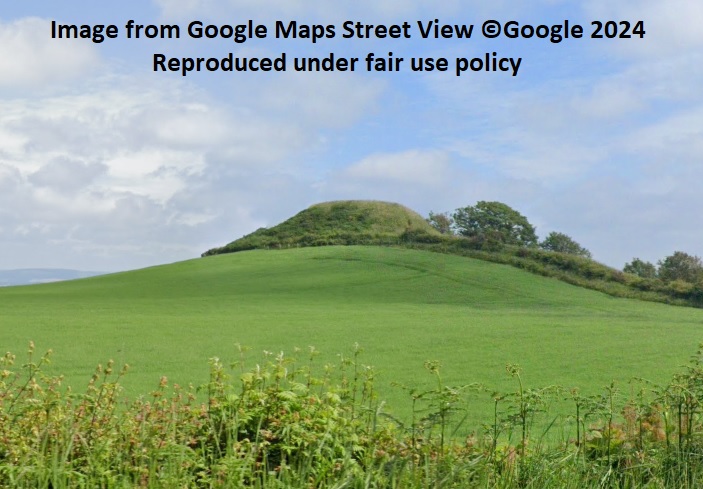Balgreggan Motte

Balgreggan Motte Details
Balgreggan Motte, large ditched motte on ridge with rampart around summit. Damaged during 1940s
- Closest To: Sandhead, Ardwell
- Access: S.O.A.C. Public Access
- Grid Reference: NX096504
Balgreggan Motte occupies a natural high point atop the steep slopes marking the east coast of the Rhinns of Galloway south of Glenluce, and overlooks the sandy expanse of Sandhead Bay. The coast to the north is marshy and tidal, and it is likely that there was no safe landing space between here and the mouth of the Water of Luce. It is only three miles or so south to the motte at Ardwell, lending the possibility of a signalling function to these sites.
There is no evidence of a bailey or of a ditch around this motte, and the shoreward side has degraded – at least in part due to 20th century defensive works. However the mound itself rises 8 metres above ambient ground levels to the north and perhaps 13 metres to that to the south. The oval summit as it survives is about 20 metres by 17, enough for more than one building at the smaller end of timber castles.
After the death of Katherine Stewart, Lady Monypenny, in 1470, the lands of Balgreggan were leased from the crown in the 15th century, and by the mid 16th they were held by the Crawford family of Kerse (near Dalrymple, East Ayrshire). Later still they were held by the MacDowall family of Freugh. However the likelihood of the motte being used in these timeframes is small. David Crawford, the first to hold Balgreggan on record, was resident in Ayrshire, much involved with the feuds there involving the Kennedy family, so the Balgreggan lands are likely to have been of limited importance to him.
The Monypenny lands were in Fife, so it would appear that Katherine Stewart was the person to whom the lands were attached. In the Monypenny Breviary, the Stewart arms depicted are the blue and white checked fess on a gold background, which is the principal Stewart arms, and her grandmother was called Marjory. All we can say is that it is unlikely that she was not of the Darnley Stewarts, or the Garlies Stewarts (both of them had a red bend in their arms) and her marriage had taken place by 1458, meaning she was probably born in the 1420s or 1430s. The Dalswinton branch seems possible – but it is hard to say. Either way, this is still late for the use of a motte castle, and an earlier date is to be assumed, possibly dating to the time of Roland of Galloway, founder of Glenluce Abbey, or his son Alan. Both were Constables of Scotland, the senior military commanding role, so founding castles was within that remit. The truth is, we do not know.
Become a supporter of my work to access a more detailed history